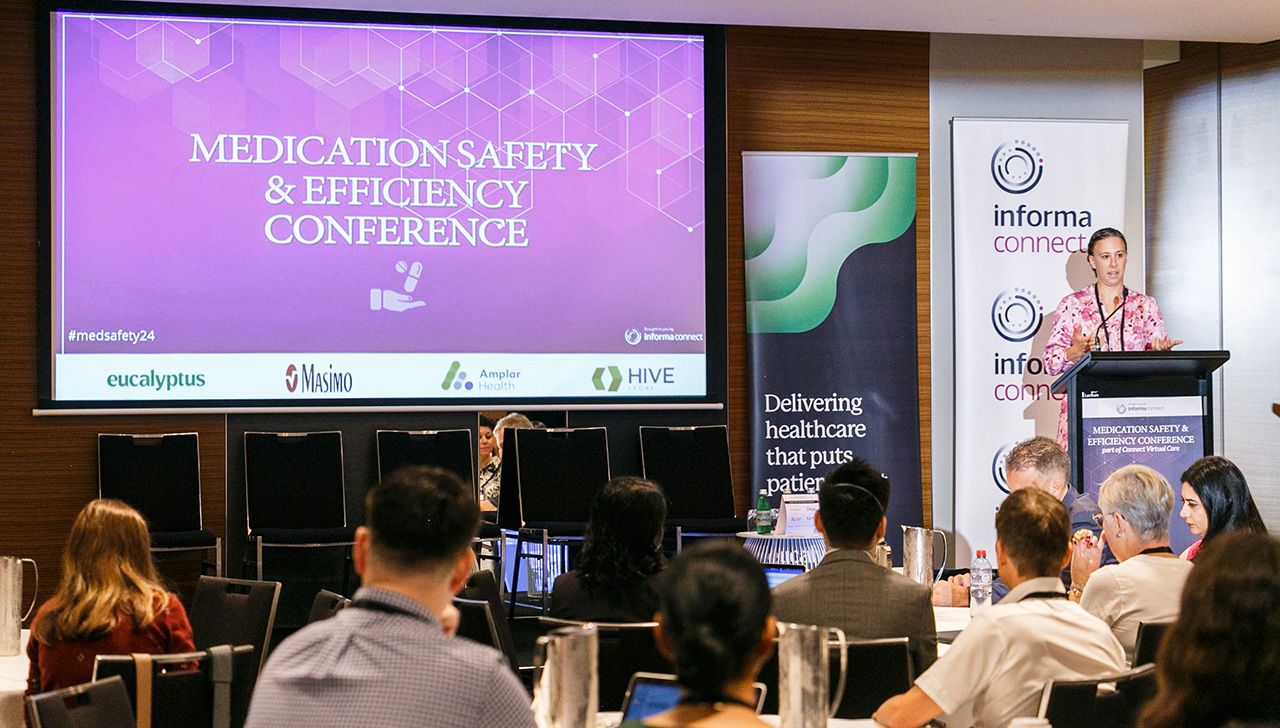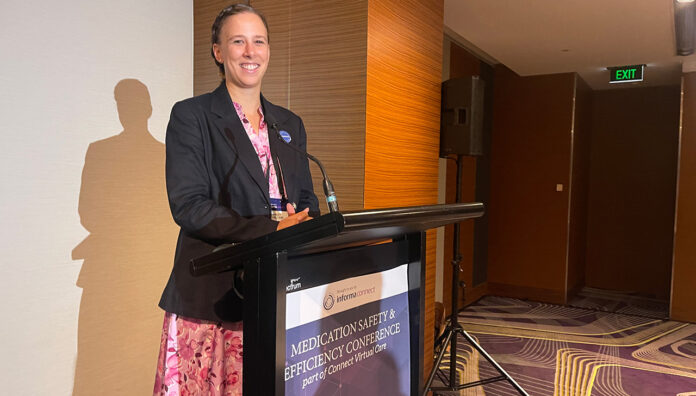Deborah Hawthorne MPS recently chaired the Medication Safety and Efficiency Conference, held in Sydney from 7–8 March. Here are her reflections on whether digital health is making care safer.
Do pop-ups make practice safer or more dangerous?
It seems a reasonable assumption that pop-up warnings make health care safer. Surely health professionals who are provided with information about drug interactions or potential errors at the time of prescribing/dispensing/administration make safer decisions?
It turns out, we largely don’t know – there is very little high-quality evidence on the benefit of pop-up warnings. But, as Professor Mel Baysari, from the University of Sydney outlined, when you study the actual (rather than perceived or expected) effects of Drug-Drug Interaction warnings, it might be making care less safe.
 As all clinicians are aware, we are constantly having to determine whether the drug-drug interactions that pop up on our software, when dispensing, prescribing or administering medication, are actually relevant to the person in front of us. Not every interaction will produce an adverse effect, but the pop-ups continue which naturally can make the user immune to its information due to lack of tailoring.
As all clinicians are aware, we are constantly having to determine whether the drug-drug interactions that pop up on our software, when dispensing, prescribing or administering medication, are actually relevant to the person in front of us. Not every interaction will produce an adverse effect, but the pop-ups continue which naturally can make the user immune to its information due to lack of tailoring.
Further research and effective use of AI will be critical to changing this.
The adoption of electronic medicine management in hospitals is now widespread
While innovative digital changes have been occurring in community pharmacy for quite a few years, the roaring uptake of electronic medical records in public hospitals seems to have suddenly exploded Australia wide.
We heard from leaders in six jurisdictions that, while electronic medicine management systems may not yet be completely perfect and universally adopted (paper charts still exist in some hospitals!), we are already living in the future in regards to embedding Electronic Medical Record (eMR) technology.
But each state and territory is charting their own path. And in some states, every hospital is charting its own path. This includes using vendors, software systems, design approaches technology and staff authorities. In many ways, different approaches are a testament to the vast geographical nature of the lands in which we live, work and play.
It would also be naive of us to consider that a one-size-fits-all approach is possible when our communities are so different from each other. But there is surely an opportunity for a more consistent approach – as one panellist eloquently put it ‘standardise first – customise by exception’.
Pharmacists are driving safer prescribing in virtual care
I was inspired to hear how pharmacists revolutionised safe, evidence-based prescribing of COVID-19 antivirals at the Victorian Virtual Emergency Department. Pharmacist Alexandra Brown from Northern Health showed how development of evidence-informed workflows and multidisciplinary team collaboration helped achieve a much higher prescribing rate of the more effective nirmatrelvir/ritonavir (Paxlovid) compared to molnupirivir (Lagevrio) – in line with Pharmaceutical Benefits Scheme criteria and clinical guidelines.
 I was really impressed to see the data that showed a reduction in clinically relevant errors of >90%, including correct dose adjustment for renal impairment, management of drug-drug interactions and reduced inappropriate therapy modification.
I was really impressed to see the data that showed a reduction in clinically relevant errors of >90%, including correct dose adjustment for renal impairment, management of drug-drug interactions and reduced inappropriate therapy modification.
Also central to their service is connection to community pharmacies, incorporation of health literacy principles to the prescribing and initiation process, and follow-up with patients after commencing the medicine. So many valuable lessons for future virtual clinics (and in-person ones too!)
Back to the pop-up alerts…
Selvana Awad (NSW Health) took Professor Baysari’s research to the next level by exploring and developing a more relevant clinical decision support system (CDS) than currently exists in NSW hospitals.
Even as a pharmacist who doesn’t work in the hospital setting, I keep drawing parallels between this experience of alert fatigue to both community pharmacy and primary care (mainly GP clinic software) settings.
I feel it is also a stark reminder that while digital aids are here to help users, pharmacists and other clinicians will never be replaced by this technology as every decision we make in practice is extremely nuanced and tailored in approach.
Final thoughts
In the future, digital technology (and much more that probably hasn’t been invented yet) may take over some facets of our current workflow. However, as our scope of practice continues to evolve and grow, pharmacists and clinicians will require these aids to be able to provide more services and value to the communities we serve – provided they are effectively designed, maintained and supported.
It’s exciting to think about the future and its possibilities, and I can’t wait to be a part of it.




 This article was sponsored and developed in collaboration with PSA and Carers NSW[/caption]
However, pharmacists may perceive medication errors or non-adherence as a carer’s inability to fulfil this role,
This article was sponsored and developed in collaboration with PSA and Carers NSW[/caption]
However, pharmacists may perceive medication errors or non-adherence as a carer’s inability to fulfil this role,

 Now a PhD candidate, former Sudanese refugee and NSW Pharmacist of the Year
Now a PhD candidate, former Sudanese refugee and NSW Pharmacist of the Year  David North OAM
David North OAM NSW Early Career Pharmacist of the Year Lily Pham
NSW Early Career Pharmacist of the Year Lily Pham





